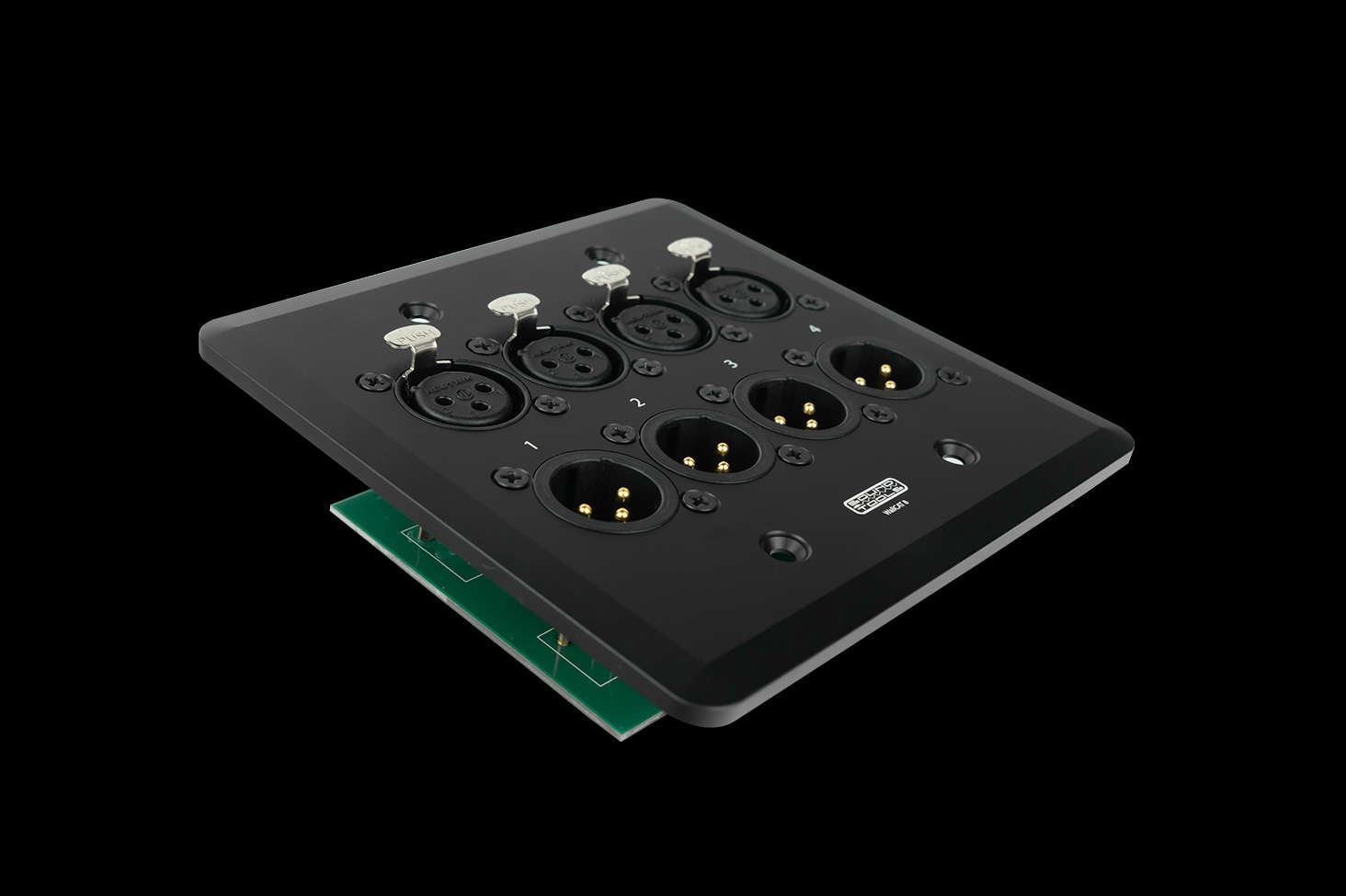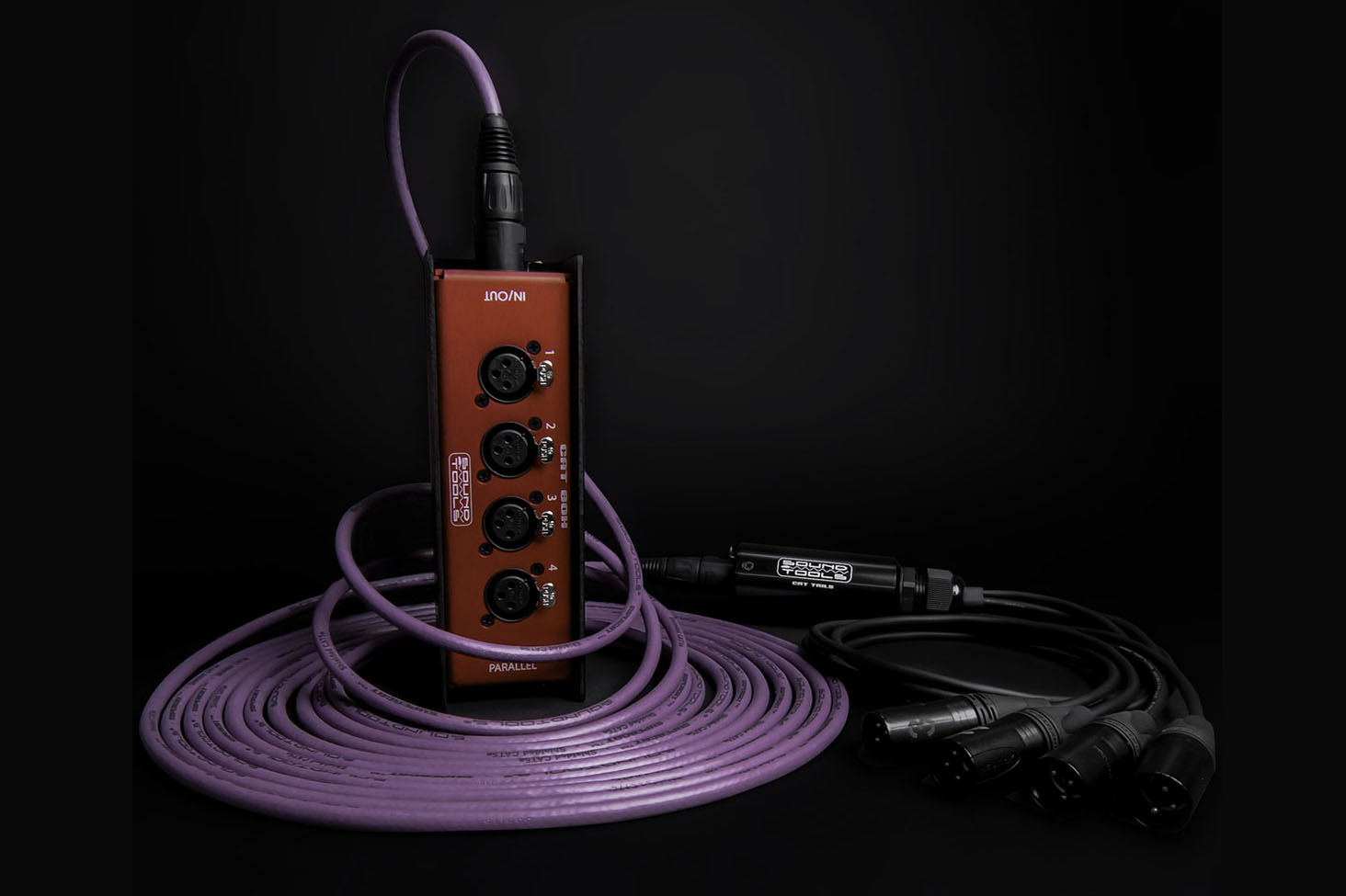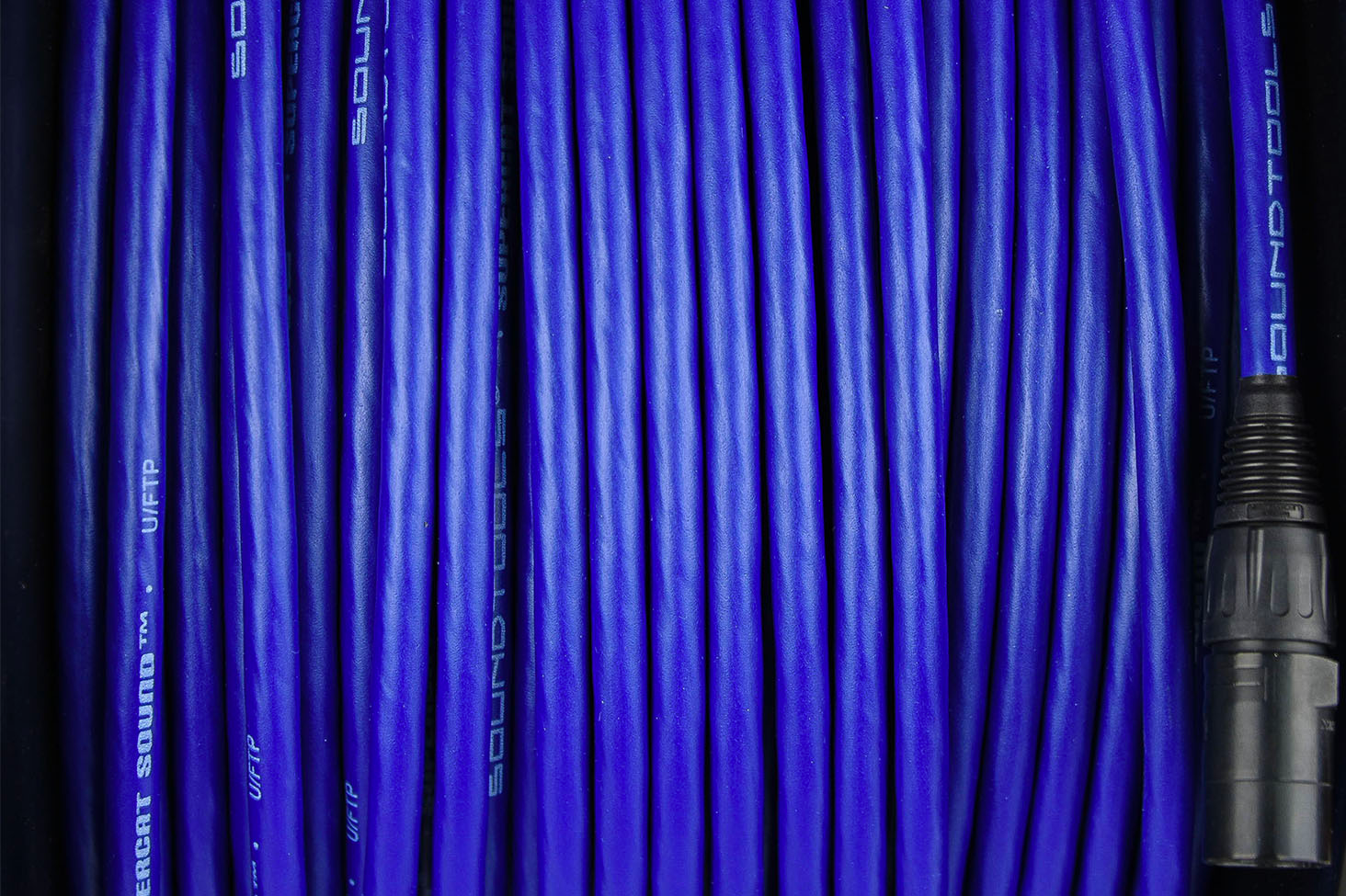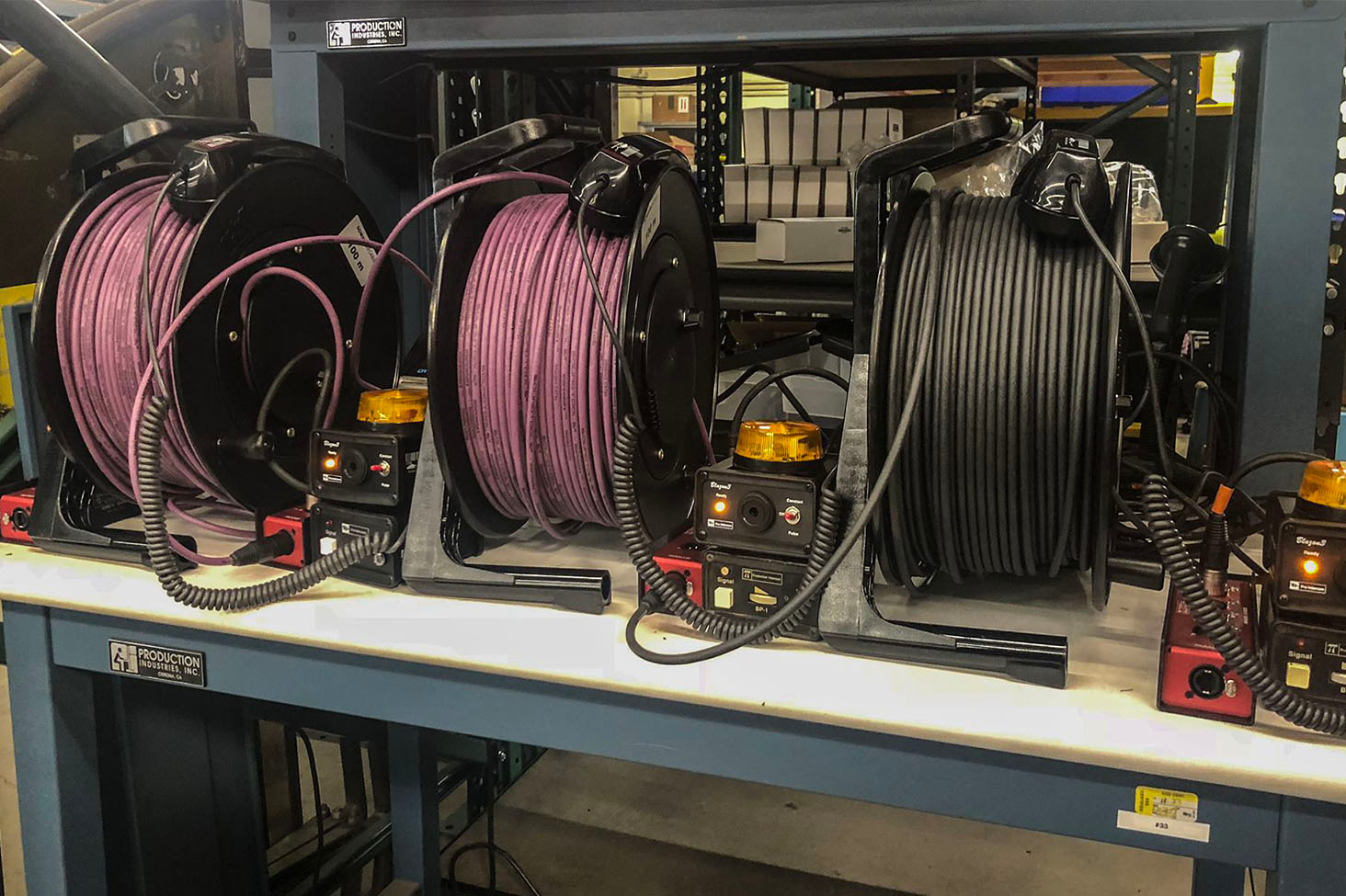Interview with Terry Pearson
Front Of House Engineer for Sonic Youth and Tenacious D
Meet SoundHuman, Terry Pearson, the former FOH engineer for Sonic Youth and now currently Tenacious D. Terry has been in the industry for over 20 years and shared with us what it was like touring with Sonic Youth for 10 years and what led him to his successful career in the industry.
What got you started in the industry?
I was lead singer in a band in Austin, TX mid-70's. I bought my first PA in '.74. It was a pair of Altec "Voice of the Theater" cabs (1x15', 1x2" horn). We bought two McIntosh Mono power amps(60w), built wooden boxes w/whisper fans to carry them. Then ganged two Peavy 8ch boards together. For the time it sounded pretty good. Eventually, I started to rent my PA to other local acts when we weren't working, so this gave me a chance to mix different types of music from out front. I continued to play in various configurations for several years. In '83, one of my former bandmates suggested we pool our money to get the lease on a well-known Austin venue "The Continental Club". We took the various pieces of gear we had acquired to put in as the house PA. He would handle the booking, and I would run sound. This led to me working with lots of great local bands and some touring acts. It was a 200cap venue, but was central to the Austin music scene (which was becoming nationally known during this period). This setting really allowed me to hone my skills, as I was running FOH & Mons for shows. Eventually, Sonic Youth came through. On their second time through ('86), they asked if would like to come on tour with them. After several years of working 6day weeks and 12hr days, I was ready for a change, and this seemed like a great opportunity.
What influenced your path that led you to becoming a Front of House Engineer over a Monitor Engineer?
I guess the simple answer is that I was initially hired to mix FOH, so that was my focus. I started touring in '86 on what might be considered the Punk Rock circuit, so we all traveled by van across the country to various venues that were booking alternative bands. This meant we were playing small capacity venues with limited PA systems. Most entailed mixing both FOH/Mons from the main console. If there was a separate Monitor board, it usually fell to the house tech to run those. Given my position with the band, I was responsible for making sure both FOH/Mons were working and sounding good. As you can imagine there were lots of nights trouble shooting problematic systems, at both ends of the snake. From my work with Sonic Youth, I met lots of bands playing that circuit who began to employ me when SY wasn't touring. This kept me busy on the road, so I never worked for a PA company (which meant I stayed at FOH).
What are some of the biggest changes as an audio engineer that you have seen in the industry the past 20 years?
The two most obvious changes are the transition from Point Source systems to Line Arrays, and the moving from analogue to digital mixing consoles. The technology of line arrays has revolutionized the way we experience concert sound, especially in terms of coverage. I had a more difficult time adjusting to digital consoles. The PM5D was the main contender early on, and I found it very hard to EQ things the same way as I had been hearing on analogue consoles. Ultimately, you have to adjust your frame of reference and make the best of what you have. Luckily, there has been constant improvement within the digital platform to help engineers achieve better results.
Back when touring with Sonic Youth, what were some of the biggest differences between the U.S and Europe?
The music of Sonic Youth was pretty revolutionary at the onset. Many considered them a "noise band", especially in the US. Whereas in Europe, they found a much more appreciative audience for their avant style. We could tour Europe twice as much and draw better crowds. Apart from England, most of the EU countries venues were state funded. This meant even small venues were supported with funding that allowed for decent PA systems. After slogging through the maze of crappy, half broken, mono systems in the US, I was finally able to mix in stereo! Plus, they had competent, friendly, engineers. This really helped me learn the finer points of gates, compression, etc. Also, we were able to play a number of large festivals in Europe. This was where your knowledge/skills are really put to the test. You have a 20-30min changeover, line check on cans, unmute and go. The payoff is when the audience totally gets into the band (and you know you've pulled it off).
What do you think led you to your success of touring with Sonic Youth for 10 years?
I think one of the reasons they hired me, was because I could appreciate their artistic vision. I had a number of people back in the day ask how I could deal with all the noisy, detuned, guitars? I felt like it was cool, psychedelic, free jazz guitar, with 3 singers who wrote interesting lyrics. Because of that shared vision, they allowed me lots of freedom in my approach to mixing them. As with any gig, being a hard worker and a decent person to hang with goes a long way.
If you had to name your favorite show you’ve ever worked, what would it be?
That's very hard to answer! I've had the pleasure of working with so many wonderful artists! I guess one that stands out, is when working with David Byrne on his 2001 "Look Into the Eyeball" tour. He employed a six-piece string section (3 violins, viola, 2cellos) for the dates. I had never mixed strings before (using AKG C419 clip on mics). Initially, he used pickup string sections in various cities/countries. This meant we were basically rehearsing the full show at soundcheck. As we started the second leg, he decided to hire a section that would do the entire tour. He found a perfect fit with the Tosca strings from Austin. They had accompanied a variety of artists and weren't the usual symphony type of players. I utilized 3 stereo graphic EQ's across subgroups, so I could get substantial gain before feedback on the strings. Once we had it dialed in, the strings were loud and amazing! I remember a number of shows on that tour where, after the first numbers featuring strings, people would stand and give multi-minute ovations throughout the show. I had never experienced anything like that before!
How long have you been working with Tenacious D and what landed you there?
I was hired to tour with John Carpenter (film director, composer) in 2016. I had no idea that JC had written all the music, as well as directing all those great horror films. It was his first time (at 70) to ever perform his music, so was a treat to watch the transformation as he embraced being on stage and the crowd response to his work. The backing band included the members of Tenacious D's band (guitar, bass, drums). We had a break between legs in Europe, and I was asked to join the band as they headed to do two large German festivals (150k estimated) with the D. We flew from Spain to Germany after a 2am load out and headed directly to festival site. It was trial by fire (& rain). I programed my input list between Metal acts the first day. Just before we were due to go on that night, intense thunderstorms rolled through the area. I got the call to roll intro music...nobody came out! I was freaking, thinking I had messed up. After a bit, the promoter came on and told everyone to go back to their campsites due to lightning. I was stuck at FOH for some of the most intense weather I had ever experienced. I finally made it backstage after being told the show was canceled. Yet within an hour or so, we were back on. Despite the stressful initiation, the show went well. The next day the weather cooperated, but we leaned several people had been injured by lightening at the first show. I guess my ability to work under intense pressure (and very little sleep), helped me towards working FOH for them these last 6yrs.
Do you have any embarrassing stories while working on a gig?
Many, but two come to mind. I was touring with Eels, the run took us to Norway for a one off at the Norwegian Wood festival. It was a beautiful, rural, setting which had experienced several days of rain. FOH was on a platform built into a hillside. As the band came onstage for soundcheck, they got see my slide down the hill as I attempted to reach FOH (which earned a round of applause from the stage). I guess you could say I ended up with a "muddy" mix position. An embarrassing moment which resulted in a sound cue, was when I momentarily hit "all mute" during a Sonic Youth set. When I mentioned what had happened, they thought it created an amazing dynamic (sound seems to go away, then blasts back in). I was instructed to try and find creative ways to utilize the mute once per show. This request didn't last too long, but for 4-5 shows the TM would come out to make sure I did it.
What is the best sound tip you have ever received or would give to another Sound Human?
One of the best festival tips I received was to put the whole band on a single VCA, separate from your vocal VCAs. This allowed me to easily balance the band's level against my vocal level when starting out. I think knowing frequencies is essential. When time is limited, just being allowed to hear your voice through a system for 5-10min can give you an idea of what approach you'll need in achieving a good overall sound (read: touch up EQ). Be aware that if you have numerous wedges on stage, sound between FOH/Mons is sympathetic. Good communication about EQ between the two positions can help achieve better results at FOH. Protect your hearing as much as you can. Listening to a variety of music for enjoyment will inform how you approach mixing (use of effects, instrument/vocal placement). Don't be afraid to use exaggerated dynamics for your FOH mix...when the guitarist takes a solo, pump it up! Your job is sound reinforcement, but a big part of that is making a positive connection between the artists onstage and the audience.





